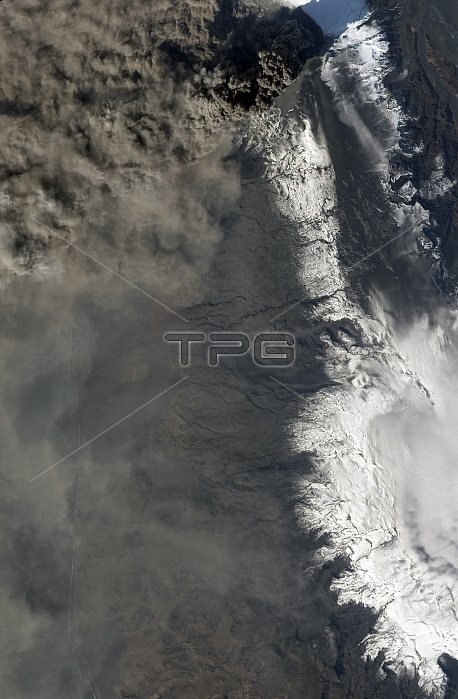
When Iceland's Eyjafjallaj繹kull Volcano began erupting on March 20, 2010, the first lava to erupt came from vents on the lower slopes of the volcano, which were snow-covered, but not under the mountain's year-round ice cap. Lava flows filled gullies and built mounds of frothy rock, and they melted and vaporized the winter snow, creating relatively small steam plumes. In mid-April, however, the character of the eruption changed dramatically, and this natural-color satellite image from April 17 provides a look at the new eruptive phase. A cloud of charcoal-brown ash covers half the image. A fresh plume of ash rises over the summit, its southern face illuminated by sunlight and its northern face deeply shadowed. The ash column casts a tall shadow onto the snow-covered ground to the north. West of the plume, the ground is nearly covered by ash. This high-resolution view of the plume was captured by the ALI on NASA's EO-1 satellite. NASA image by Robert Simmon, using ALI data from the EO-1 team.
| px | px | dpi | = | cm | x | cm | = | MB |
Details
Creative#:
TOP22313743
Source:
達志影像
Authorization Type:
RM
Release Information:
須由TPG 完整授權
Model Release:
N/A
Property Release:
No
Right to Privacy:
No
Same folder images:

 Loading
Loading